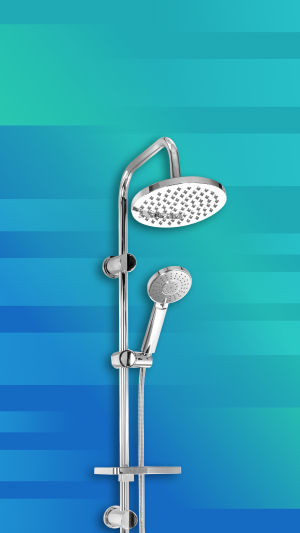Taking a bath is a modern way of relaxing and rejuvenating. A good shower is essential for a comfortable family life. There are several materials used for showers, and each material has its own set of advantages and disadvantages.
In this article, we'll look at the different materials used for showers and the factors to consider when choosing a shower.
Plastic Material: Plastic showers are budget-friendly and have good overall performance with regard to heat resistance and strength. However, the outlet holes are usually made of silica gel, which can easily get clogged with scale over time. Thus, regular cleaning is necessary.
Stainless Steel: Stainless steel is known for its strong wear resistance and resistance to rust. However, its style options are limited, and the workmanship is often not up to par.
Aluminum Alloy/Aluminum-Magnesium Alloy: These materials are lightweight and durable, but after prolonged use, they can turn black.
Copper Chromium Plating Material: There are two types of copper chromium plating materials - hollow copper chromium plating and all-copper solid chromium plating.
Hollow copper chromium plating has several style options and is moderately priced, but it can easily fall off in wet environments and the electrocoating is thin and prone to deformation. All-copper solid chromium plating, on the other hand, has a thicker and more durable electroplated layer, but it is also more expensive.
The material used for a shower is a crucial factor to consider as it directly affects the shower's lifespan. Hence, it's important to choose environmentally friendly and high-quality materials.
The shower, as we know it today, has evolved from the simple spray pots used to water plants. As living standards and technical abilities have improved, people have started to pay more attention to the comfort, functionality, and aesthetics of showers, leading to the rapid development of shower technology and design.
So, what should you look for when choosing a shower?
Quality of Shower Electroplating: Observe the surface of the product and make sure it is uniform, smooth, bright, and free of defects. Touch the surface and make sure it is even and the fingerprint disperses quickly.
TPR Outlet Nozzle: Most reputable brands use soft glue outlet nozzles, which have evenly arranged particles that are soft and smooth. The quality of these nozzles is durable, and if there is a nozzle blockage, it can be easily removed by kneading.
If the nozzle particles are hard and rough, it's best to avoid that product as it's difficult to remove blockages and may cause damage.
Fit Gap of Each Part: A good shower should have a small and uniform fit gap between each part, which is a reflection of the factory's production management and control level. Showers with large gaps and uneven fits should be avoided as they generally have poor quality.
Effluent Effect of Shower: This is the most crucial aspect of a shower as it directly reflects the technical ability of the manufacturer. It's best to test the effluent effect of the shower before purchasing by taking a few showers and connecting them to the same outlet to see the Effluent effect.
Even well-known brands may compromise on the effluent experience of a shower to reduce costs, increase functionality, or improve appearance. Hence, it's important to consider the factors mentioned above to ensure that you get the best shower for your needs.





